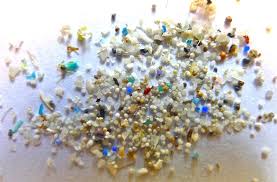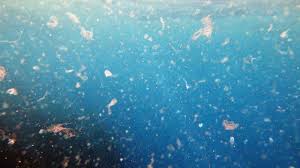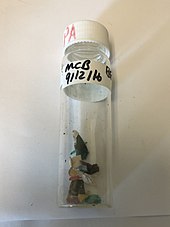


Two classifications of microplastics currently exist. Primary microplastics are any plastic fragments or particles that are already 5.0 mm in size or less before entering the environment. These include microfibers from clothing, microbeads, and plastic pellets (also known as nurdles).[5][6][7] Secondary microplastics are microplastics that are created from the degradation of larger plastic products once they enter the environment through natural weathering processes. Such sources of secondary microplastics include water and soda bottles, fishing nets, and plastic bags.[7][8] Both types are recognized to persist in the environment at high levels, particularly in aquatic and marine ecosystems.[9] The term macroplastics is used to differentiate larger plastic waste, such as plastic bottles.
Additionally, plastics degrade slowly, often over hundreds if not thousands of years.[citation needed] This increases the probability of microplastics being ingested and incorporated into, and accumulated in, the bodies and tissues of many organisms. The toxic chemicals that come from both the ocean and runoff can also biomagnify up the food chain. [10][11] The entire cycle and movement of microplastics in the environment is not yet known, but research is currently underway to investigate this issue.




